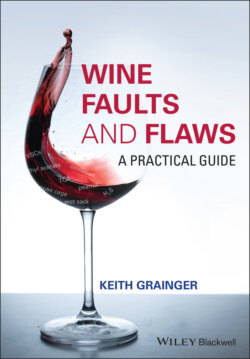Читать книгу Wine Faults and Flaws - Keith Grainger - Страница 93
2.11 Blind Tasting 2.11.1 Why Taste Blind?
ОглавлениеTasting wines ‘blind’ without the taster being given some or all the information about their identity is regarded as the most ‘objective’ way to assess wine. Blind tasting is also the best way of improving tasting technique, making the tasters rely on their individual perceptions and apply their individual descriptors. It is a valuable means of expanding the memory bank, particularly about the relationship between the descriptors and the type of wine tasted. Depending on the objectives, the taster may have absolutely no information, or maybe given certain relevant details, e.g. the wines are all Burgundies, are all made from one particular variety or are all in a certain price range. In other words, the wines are semi‐specified. An alternative approach, sometimes called ‘single blind’, is when the details of the wines to be tasted are revealed beforehand, but not the order of tasting. Such frameworks can help concentrate the mind in evaluating wines for their quality, typicity, style, and maturity.
